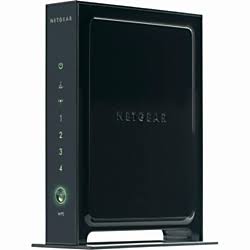 Your Internet Service Provider has provided you with a free hardware firewall, but often the firewall features are not enabled by default. This is sort of like having seat belts in your car, but not wearing them. It is foolish and risky.
Your Internet Service Provider has provided you with a free hardware firewall, but often the firewall features are not enabled by default. This is sort of like having seat belts in your car, but not wearing them. It is foolish and risky.
On Monday we discussed how to find out of there are unnecessary open ports on your Internet router’s firewall settings. Today we will provide instructions on how to discover if the firewall in your router is enabled, and if not, how to turn the feature on.
The first thing to do is find out what the local network address is for the router. There are a few ways to find this out.
- Often there is a label on the router with information that includes the model number, the IP address, and the wireless SSID and WPA2 passphrase, and sometimes the administrative user ID and password.
- This information is also in the documentation for the device. If you lost the manual, you can get a PDF copy by Googling for the manufacturer and model number and “user manual.” You may get results that include a “quick start guide.” If you find this, download it to your desktop, open the PDF file, and look for the default setting information.
- You can also get the IP address by opening a CMD window, and typing “ipconfig /all.” Look for the Default Gateway address. This is the address of your router, which is the “gateway” to the Internet.
- You can get the administrative user ID and password from the help pages of your ISP’s web site, or from any number of websites that have default credential information for just about every device ever connected to the Internet.
- Open your web browser and in the ADDRESS BAR (not the Google Search box) type the IP address like this: http://10.0.0.1. Of course you want to use YOUR IP address, not the one I just wrote.
- You should get a login screen. For my router the user ID was “admin” and the password was “password.” This is something you ought to change. You might also want to put this information on your own label and affix it to your router for future use.
- There should be a menu apparent, and one of the options should be “firewall.” One my router I have the choice between High, Medium, Low, and Custom settings. I would recommend settings of High or Medium.
- There are a lot of other features you can manage, including the wireless network name (SSID) and passphrase. There may also be parental controls, and other features.
- Once you are done, log out of your session.
- If you manage to render your router inoperable, there is usually a reset button or pinhole on the back at the bottom. Pushing the button, or inserting an unfolded paperclip into the hole will undo your changes and reset it to factory default settings. Check your user guide for specifics for your device.
Friday we will review the proper ways to secure your IoT devices.
ShareFEB




About the Author:
I am a cybersecurity and IT instructor, cybersecurity analyst, pen-tester, trainer, and speaker. I am an owner of the WyzCo Group Inc. In addition to consulting on security products and services, I also conduct security audits, compliance audits, vulnerability assessments and penetration tests. I also teach Cybersecurity Awareness Training classes. I work as an information technology and cybersecurity instructor for several training and certification organizations. I have worked in corporate, military, government, and workforce development training environments I am a frequent speaker at professional conferences such as the Minnesota Bloggers Conference, Secure360 Security Conference in 2016, 2017, 2018, 2019, the (ISC)2 World Congress 2016, and the ISSA International Conference 2017, and many local community organizations, including Chambers of Commerce, SCORE, and several school districts. I have been blogging on cybersecurity since 2006 at http://wyzguyscybersecurity.com